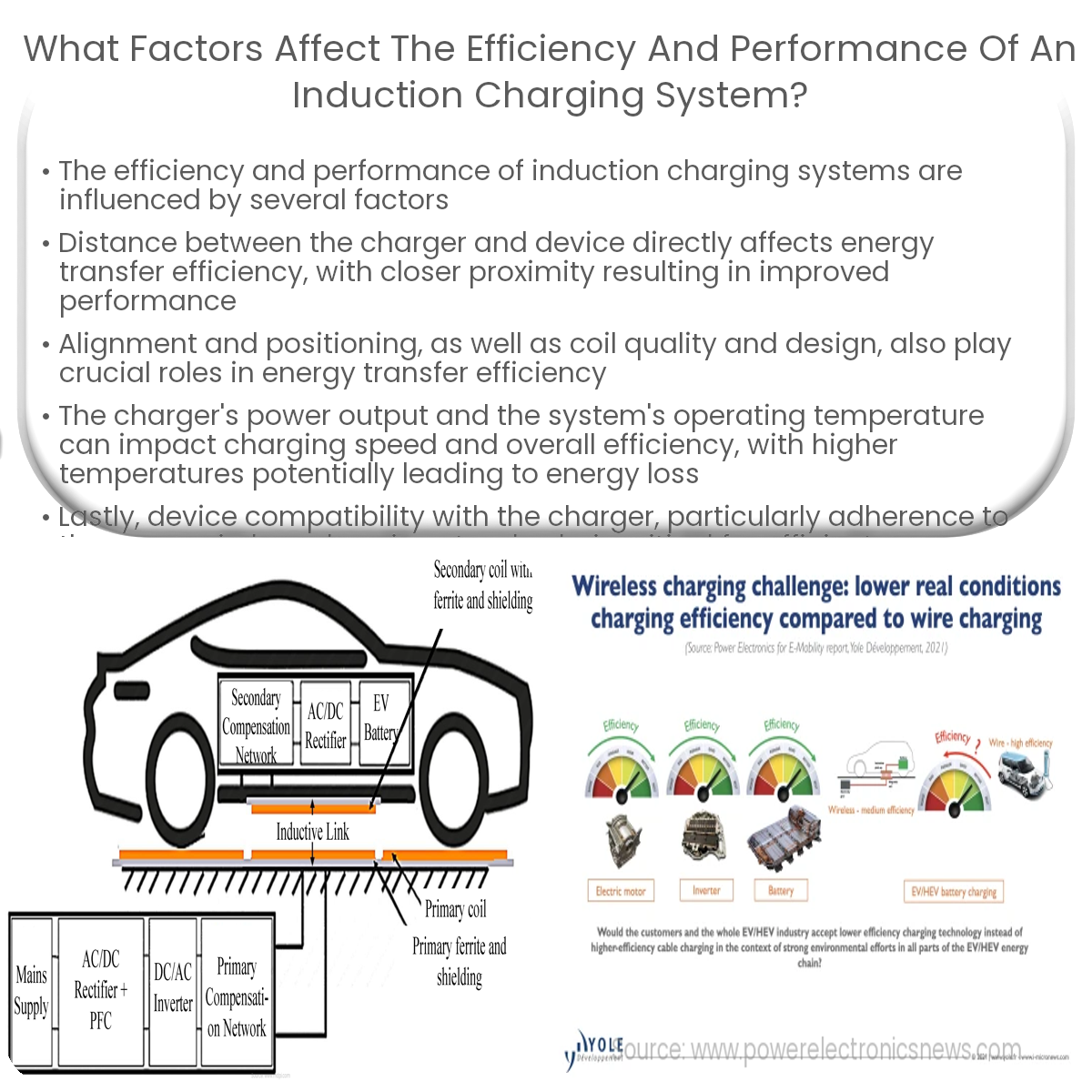Factors affecting induction charging efficiency include distance, alignment, coil quality, power output, temperature, and device compatibility.
Factors Affecting the Efficiency and Performance of Induction Charging Systems
Induction charging, or wireless charging, has gained popularity due to its convenience and compatibility. However, several factors can influence the efficiency and performance of these systems. This article will discuss these factors and their impact on induction charging.
1. Distance between Charger and Device
The distance between the charging pad and the device directly affects the energy transfer efficiency. As the distance increases, the strength of the magnetic field weakens, resulting in slower charging speeds and reduced efficiency. To maximize performance, devices should be placed as close as possible to the charging pad.
2. Alignment and Positioning
Proper alignment between the device and the charging pad is crucial for efficient energy transfer. Misaligned devices can cause energy loss, leading to slower charging speeds and lower efficiency. Charging pads with multiple coils or adaptive positioning technologies can help improve alignment and ensure optimal energy transfer.
3. Coil Quality and Design
The quality and design of the coils within the charging pad and device play a significant role in the overall efficiency of the induction charging system. Higher-quality coils made from materials with low resistance can enhance energy transfer, while better coil designs can optimize the magnetic field and reduce energy loss.
4. Power Output of the Charger
The power output of the induction charger directly impacts the charging speed. Chargers with higher wattage can charge devices faster, but may also generate more heat, which could reduce efficiency. Choosing a charger with the appropriate power output for the device can help maintain optimal performance.
5. Temperature
Temperature can influence the efficiency and performance of induction charging systems. High temperatures can increase resistance in the charging pad and device, leading to energy loss and slower charging speeds. To maintain optimal performance, it is essential to use the charging system in a well-ventilated area and avoid exposure to extreme temperatures.
6. Device Compatibility
Compatibility between the charging pad and the device is critical for efficient energy transfer. Devices and chargers that adhere to the same wireless charging standards, such as Qi, are designed to work together, ensuring a more efficient charging process. Using incompatible devices or chargers may result in reduced efficiency or potential damage to the device.
In conclusion, factors such as distance, alignment, coil quality, power output, temperature, and device compatibility can all impact the efficiency and performance of induction charging systems. Understanding and addressing these factors can help optimize the charging experience and maximize the benefits of wireless charging technology.


